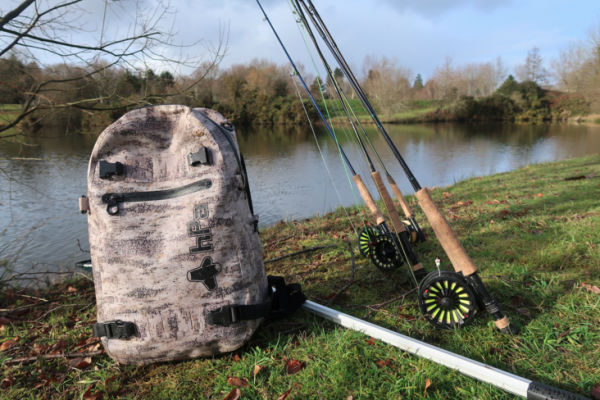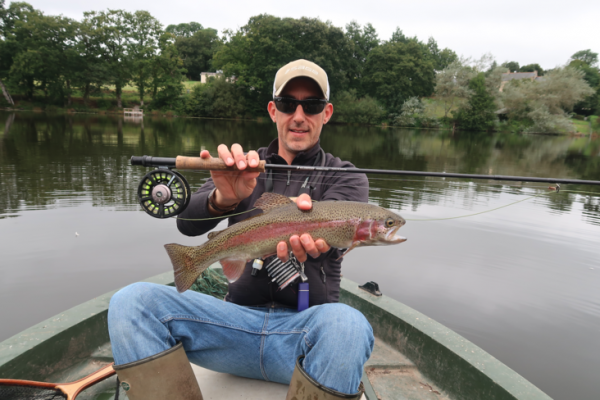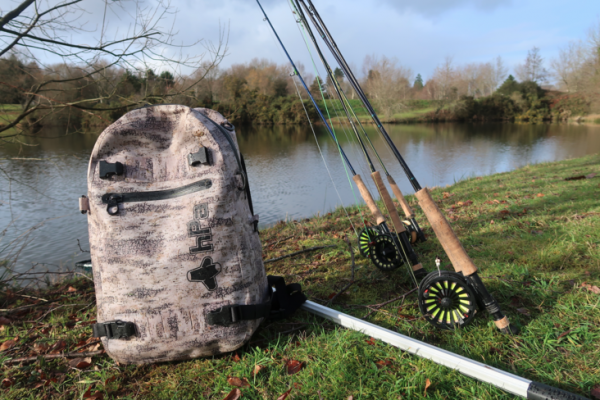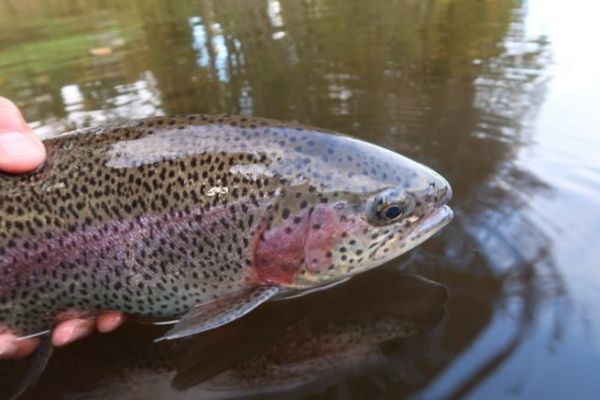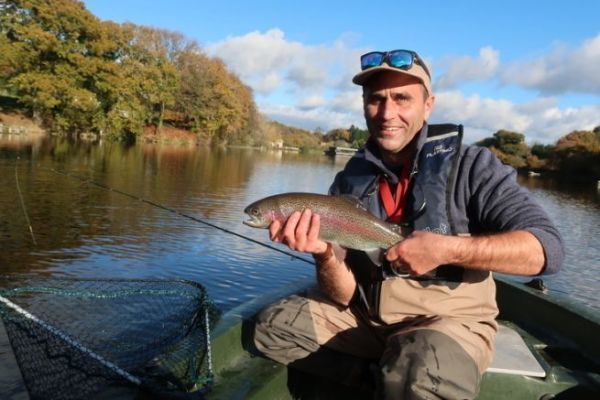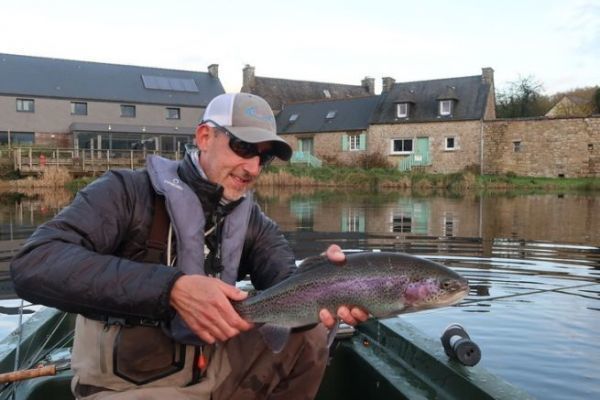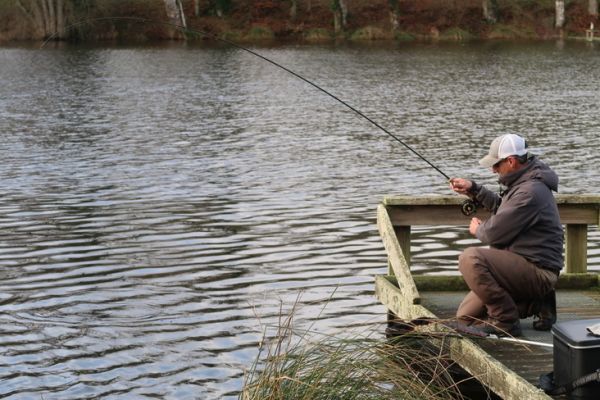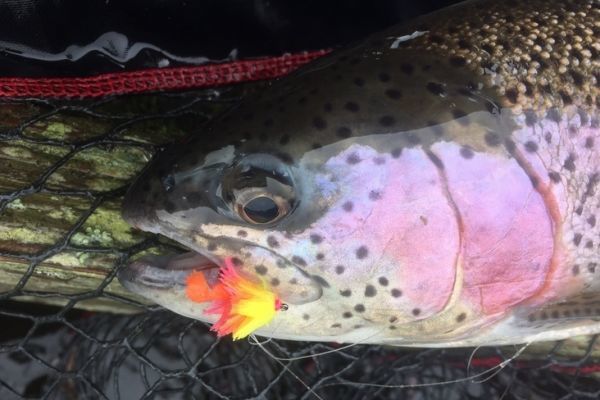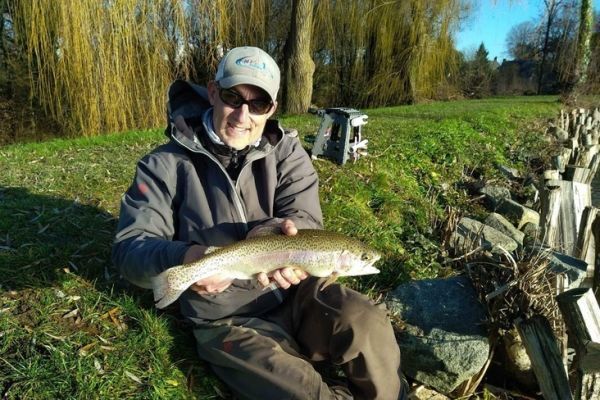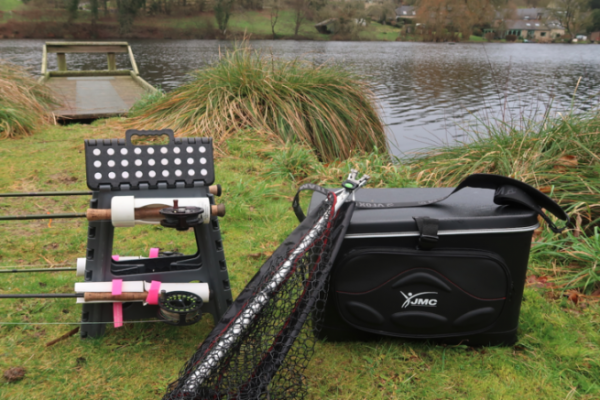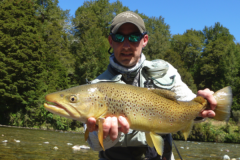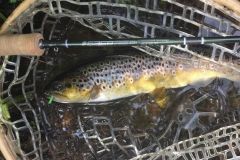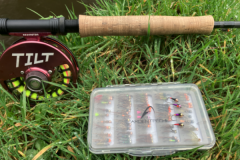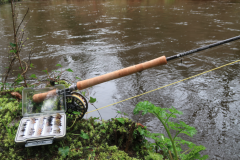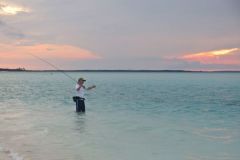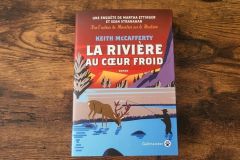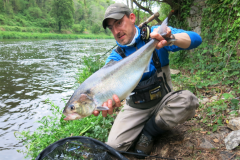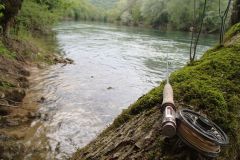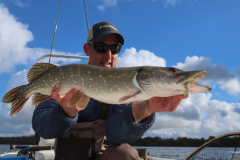Find the peach
Knowing how to adapt to find the fish of the day or even of the moment is the challenge of the reservoir fisherman where the trout have been introduced, but where they quickly become malignant and more difficult to catch.
Most regular reservoir anglers have several rods already set up to fish with different line densities, fly types and combinations depending on the fishing strategy they wish to implement.
From 2 to sometimes 5, 6 rods are used by some anglers who prefer to have all the options in hand without having to redo the leader, fly tying, etc.
Personally, I often set up 3 rods. A floating line rod to fish dry, dry-nymph, drowned, or "chiro*" in sub-surface, or streamer near the surface.
A rod made of intermediate line for streamer and chiro fishing between two waters.
A S5 or S6 sinking line rod for bottom fishing either with streamers or boobies*.

Types and lengths of rods
In tanks, rods are generally between 9 and 10 feet long (1 foot = 30 cm). A 9,6 or 10 foot rod will be an advantage to gain distance and cast further, especially from the shore. Personally, I use the SAGE SONIC rod in 10 feet, which is a soft and powerful rod at the same time. A real pleasure to cast at distance without forcing.
Regarding the power of the rods, they are between 6 and 8 silks. It is possible to go down to 5 line in certain conditions, but this is rare.
The 6 line is used for fine, light, dry, drowned and chiro fishing. It is not uncommon to use a 7 line if the wind picks up or if you need to go further to get the fish. I really appreciate the SAGE Fondation rod in 9 feet 6 line which is very versatile for fishing in reservoirs.
The 8" lures are designed to propel streamers, large flies (boobies, blobs) and the heavier lures, called diving lures.
Semi-fast to fast action rods are the norm. For fishing on fine points (below 17°), fast rods should be avoided. The softer rods allow to absorb the head strikes and rushes of big fish and to avoid breakage.
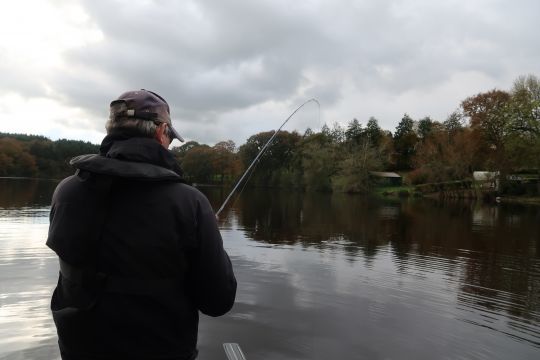
The reels
To fight big fish, especially fighting rainbows, you need to use a soft and progressive drag reel or you will be broken regularly. The hits can be violent.
Even if some big trout can take you out of the backing*, it is not necessary to have a reel with a very large capacity. It is important, however, that it balances your rod.
The SAGE spectrum C reels are very good value for money and can be used in different sizes. 5/6 for small rods of power 6. 7/8 for longer rods as mentioned above.
Lines and leaders
Tank anglers use a wide selection of lines during their fishing trips. From floating line to super sinking line to adapt to the conditions and the mood of the fish.
- Floating silk: surface and sub-surface fishing. That is to say in dry, dry-nymph (ponpon, washing line), drowned and chiro. I often use Rio Grand silk and Rio Single handed spey.
- Intermediate silk: fishing between 50 cm and 2 m maximum. Streamer, nymph and chiro. The Rio Camolux silk is a must for this type of fishing.
- Diving silk: fishing at a depth of more than 2 m. They are classified by density. The higher the number, the faster the line dives. S2, S3, S4, S5, S6 and S7. The number indicates the diving speed in inches/sec. One inch = 2.54 cm. So an S3 sinks at 7.6 cm per second for example. The Rio Fathom line series was designed for this purpose and is very easy to cast.
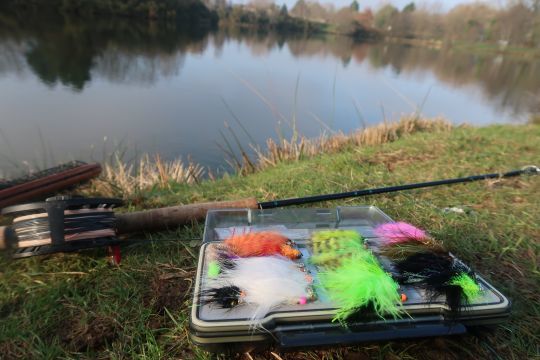
Flies for tank fishing
There is a very large choice of flies on the market for the tank. From dry flies (which float) and which imitate most often aquatic or terrestrial insects, but also drowned flies such as the famous "chiros", to streamers of all kinds either imitative (imitation of fish, large larvae) or inciting (which trigger fish), to strange flies which arouse the curiosity and aggressiveness of the fish (boobies, blog, so-called "mop" flies)
The most passionate ones assemble their flies themselves and let their imagination lead them to invent new models, or reproduce known models which one finds in the stores and on Internet.
Lexicon:
"Chiro" fishing technique where we use imitations of chironomids (mosquito larva) by mounting a train of 2 to 3 flies on the leader.
Boobie fly : non weighted fly with big eyes in foam or moss. The body is often made of cactus chenille and the tail is made of marabou. We use 1 to 3 boobies in plunging silk. The flies go up to the surface during the breaks and dive towards the bottom or stick to the bottom during the strips (animations by shooting).
Blob fly that looks like an egg or not much, in the shape of a ball.
Backing braid: braid that we put on the reel before the line. It allows to fight big fishes which sometimes take more than the length of the line and to fill the reel.
